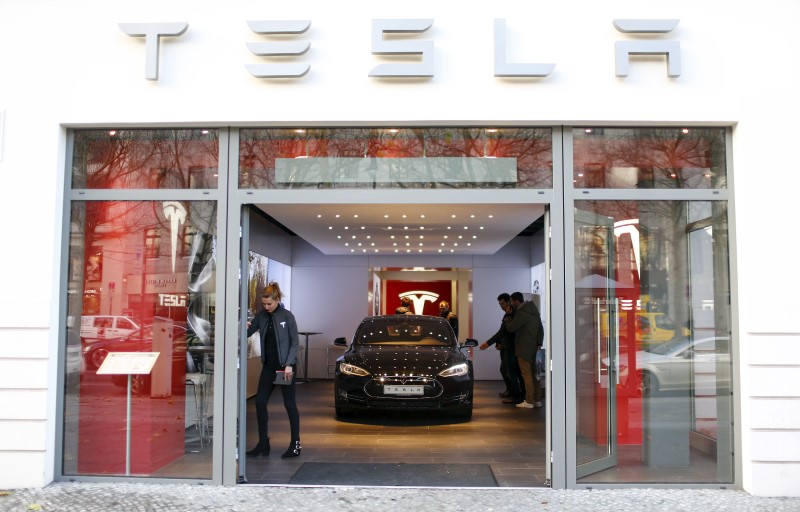Fubotv earnings beat by $0.10, revenue topped estimates
2024 could hardly have gone worse for Tesla (NASDAQ:TSLA) stock. After gaining more than 100% last year, the electric vehicle (EV) giant has come under significant pressure in recent months, mainly due to sluggish demand, intensifying competition from China peers, and a lack of updates regarding the company’s AI and autonomous driving efforts.
Tesla stock weakness explained
Last week, Tesla stock took another hit after reports that the company intends to reduce its global workforce by over 10%. On the same day, two key executives decided to depart from the carmaker, including Drew Baglino, the Senior Vice President, and Rohan Patel, the Vice President of Public Policy and Business Development.
As a result, the company’s share price fell 9% across the past five sessions, bringing its year-to-date losses to more than 40%.
Adding to its woes, the company has reportedly scrapped plans for a long-anticipated affordable car, known as Model 2. These reports also caused a negative effect on Tesla stock as investors had been hoping that this vehicle would position Tesla as a mass-market automaker.
Instead, according to a Reuters report, the company will focus on developing self-driving robotaxis using the same small-vehicle platform.
Commenting on these headwinds, analysts at Bank of America said these challenges are “well-known, and appear to be priced into the stock.”
While retaining some level of skepticism regarding TSLA’s growth prospects, the bank still sees opportunities for the carmaker in anticipation of “future growth drivers in the coming months, which alone may be enough to support the stock.”
In this light, BofA reiterated a Neutral rating on Tesla stock.
Evercore ISI sees Tesla stock below $125
On Monday, Tesla unveiled its latest round of EV price cuts across several major markets, including China and Germany.
According to a Tesla spokesperson, cuts have been made in other regions such as Europe, the Middle East, and Africa.
These price adjustments come shortly after Tesla reduced the U.S. prices of its Model Y, Model X, and Model S vehicles by $2,000. Furthermore, on the subsequent day, the company also slashed the price of its Full Self-Driving (FSD) assistant software from $12,000 to $8,000.
With over one million vehicles affected across the US, China, and Germany, and considering that the Model Y, S, and X make up 75% of US sales, the approximate $2,000 reduction in average selling price (ASP) could impact gross margins by over $2 billion, analysts at Evercore ISI said in a Monday note.
This reduction translates to a 45-55 cent decrease in annualized earnings per share (EPS) and presents a 175-225 basis point headwind to gross margins, they added.
“While we wait to see if cuts are 100% global extended (EU/RoW), we highlight that TSLA had the MOST margin to give back in NA where IRA/PTC credits are plentiful,” Evercore wrote.
Looking ahead, investor attention is now fully focused on Tuesday’s earnings call, particularly on the timing, outlook, and potential impact of the Model 2.
Without this new model, Tesla is projected to have EPS significantly below $2.50 for 2025-2026 if core volumes fail to grow materially beyond the current run rate of 1.7-1.8 million units, Evercore analysts said.
They highlighted a potential risk of Tesla stock price dropping below $125 if 2026 earnings per share fall below $3.50.
